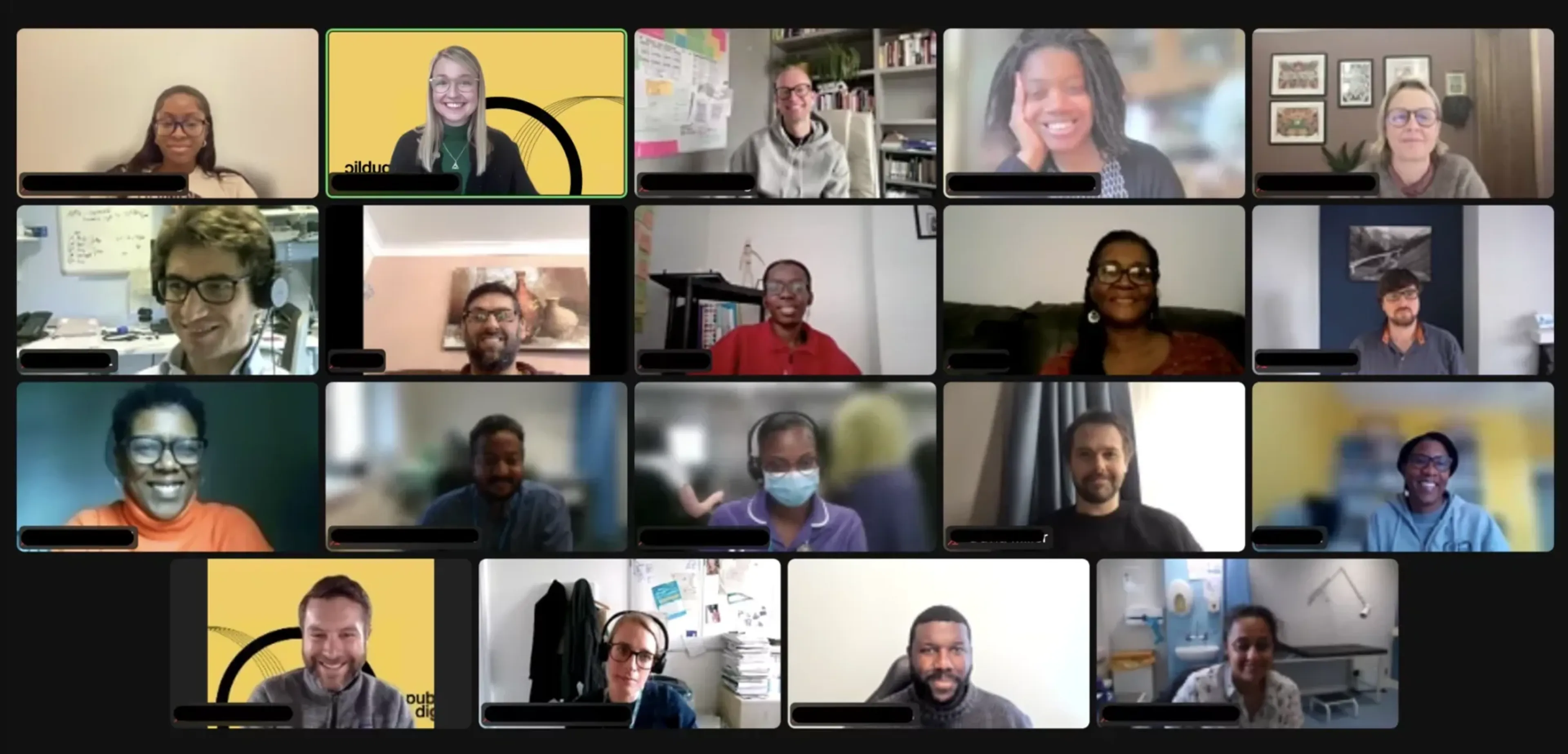
Sickle cell weeknotes
A week by week sequence of how we are building an in-depth understanding of the challenges people with sickle cell experience in accessing adequate health care when they are having an acute painful sickle cell episode.
Sickle cell disorder is our most common and clinically significant inherited blood disorder.
It overwhelmingly affects black people of African and Caribbean heritage. It has been said that “there may be no population of patients whose health care and outcomes are more affected by racism.”
In 2021, the All-Party Parliamentary Group (APPG) for Sickle Cell and Thalassaemia published an inquiry into unavoidable sickle cell deaths: No one’s listening.
The report was triggered by the death of Evan Nathan Smith, a young black man with sickle cell who died due to failure on the part of NHS staff to adequately respond to his symptoms.
The report exposed the many ways in which interpersonal, institutional and structural racism exists in the treatment and care of people with sickle cell.
In response, the NHS Race and Health Observatory commissioned Public Digital to run a digital discovery: an early phase of work focused on understanding the problem that needs to be solved.
In this case, our goal was to develop a deep understanding of people’s experiences of emergency care during acute pain episodes.
The aims were to elevate the voices of people with sickle cell, a community that has routinely been ignored and dismissed, and to find where to start with transforming the clinical experiences of people with sickle cell in England. This involved identifying digital products, services or interventions that could be scaled to improve their experiences with the NHS.
The circumstances and context of this discovery were uniquely challenging.
There is a long and terrible history of exclusion and stigmatisation of people with sickle cell, in particular black people with the disease. The way people have been treated at their time of greatest need has led to deep distress, trauma, and easily avoidable deaths.
As a result, individuals and user groups are understandably distrustful of new promises to redesign and improve services.
At the same time, sickle cell care pathways are complex. They encompass community, emergency and acute care. Often clinicians without specialist knowledge of sickle cell - for example in emergency wards - can be more impactful to patients’ experience at the point of crisis than haematology specialists.
Historically, patients’ needs have been poorly understood and documented, and there were few hypotheses around potential products or services that might have an impact at scale.
All of these factors necessitate a truly user-centred approach. We spoke and listened to people with sickle cell, advocates and bereaved families. We asked them to describe their lived experiences in the NHS. We also spoke to GPs, haematologists, sickle cell nurses, paramedics and Accident and Emergency clinicians, and asked them to describe their experiences in delivering care for people with sickle cell.

One of the most radical steps we took was to share all of our work publicly as we did it.
At Public Digital, we talk a lot about the value of working in the open: showing people the work you are doing, as you’re doing it.
With the combination of high levels of political attention, voices that have not been listened to enough before, and some people deeply sceptical that anything would ever change, working in the open helped build trust and engagement with our work. We approached this in a number of ways.
We published public online weeknotes telling everyone what we were doing each week, sharing them on social media and through the Sickle Cell Society and other interest groups. This let people with sickle cell, clinicians and political stakeholders all see what we were doing, stay informed, and get involved.
When we wrote our report, we shared the draft openly online, getting further input from stakeholders.
We also brought together a large group of stakeholders - some of which we only reached through our other efforts to work in the open - for a multidisciplinary co-design workshop. We shared what we had learned to further validate our findings. We sought their collective input and ideas on how to take our findings forwardsand to build momentum towards an ongoing user-centred approach.
Our report generated significant media interest, and led to NHS England scoping how to test building a shared sickle cell care record. This is not a new idea, but our work showed that the value in this concept could be in the accountability it creates in medical professionals. This is the hypothesis which the NHS Race and Health Observatory is taking forward to test and continue to develop.
Our discovery explored and identified potential products or services that could improve the experience and care of people with sickle cell when they are experiencing an acute painful crisis.
We reviewed the evidence to make sure we were building on what is already known. It helped us to understand and make sense of the challenges surrounding sickle cell care, and ground our research in what has already been tried, proven or disproven.
We used a trauma-informed user research approach to listen to and understand the lived experiences of people with sickle cell with the NHS. We shared some of those stories https://www.nhsrho.org/researc...
We conducted a digital and technology landscape review, exploring technology relevant to sickle cell care, including digital care plans, medication tracking and pain management. This helped us learn what has a meaningful impact, and what might have the potential to be scaled.
We made clear recommendations of promising digital opportunities and approaches that are worth testing. This included the development and use of care plans, particularly with a view to creating professional accountability, operating model implications for A&E, and improved communication and collaboration across care settings.
We built a collaborative, multidisciplinary community to prioritise and evaluate interventions to take forward into a testing phase, including a delivery partnership with an NHS Trust to test future interventions at scale.